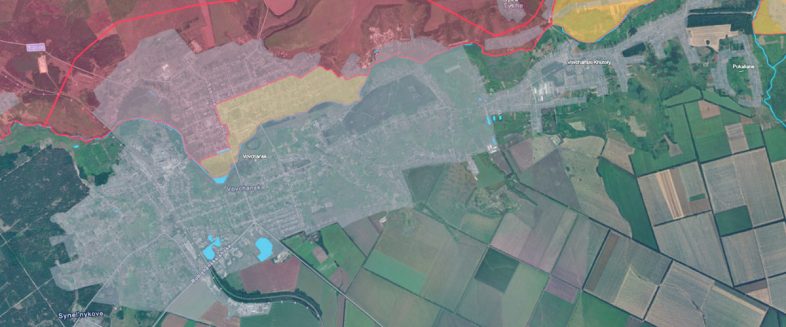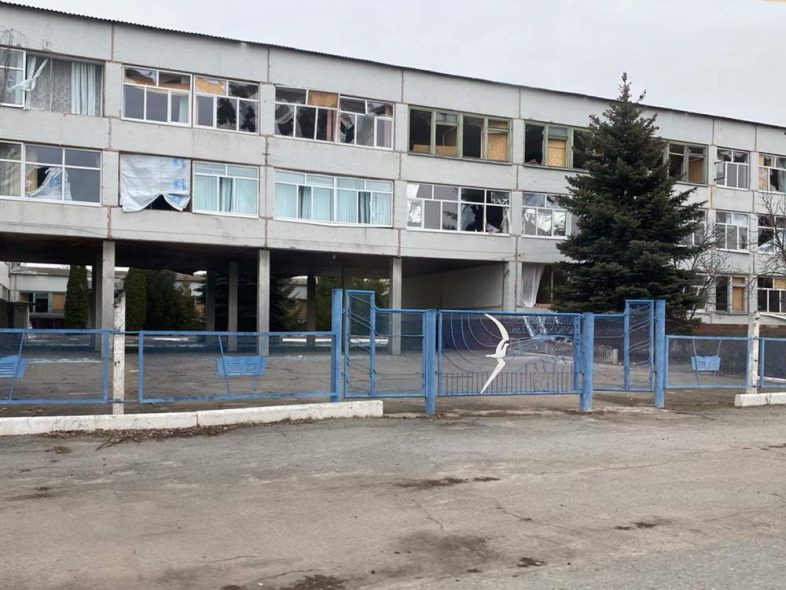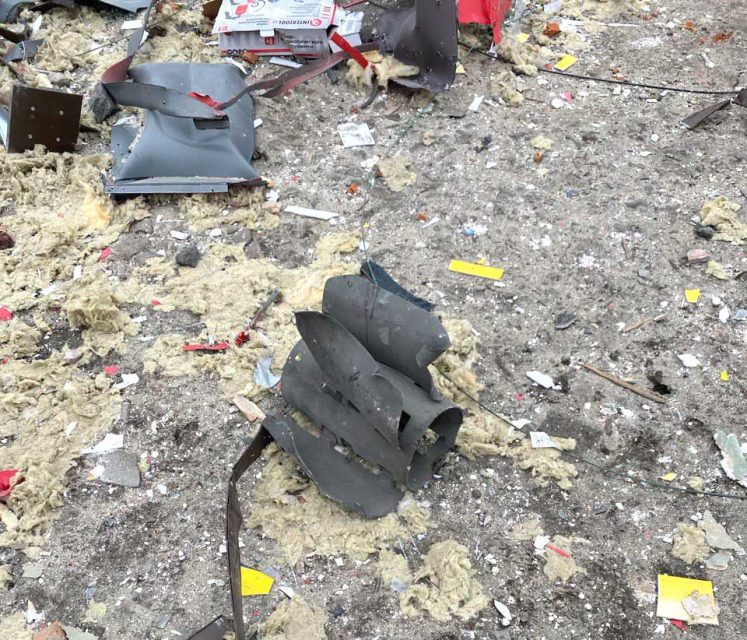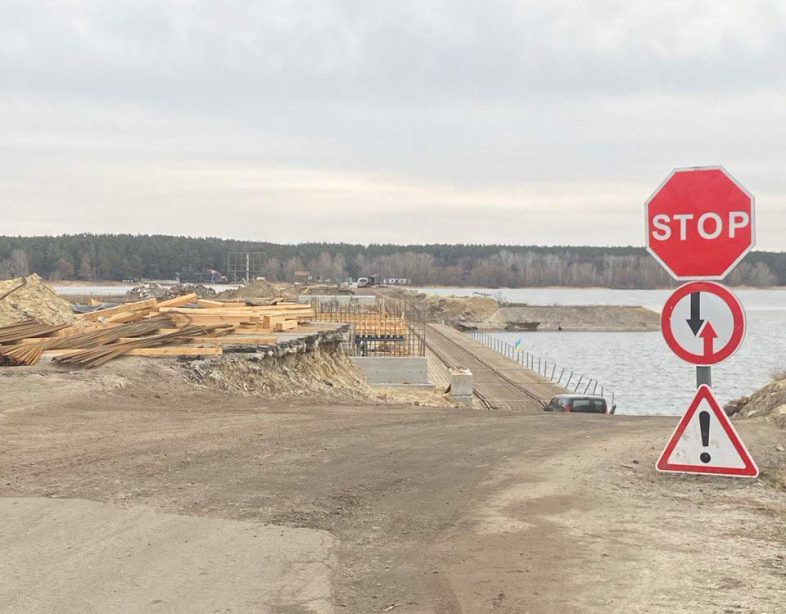Vovchansk, situated just five kilometres from the Russian border, endured occupation for eight months. Russian forces seized control of the city on the first day of the full-scale invasion, but on September 11, 2022, Ukraine’s Armed Forces liberated the city. Since then, Vovchansk has endured relentless shelling by Russian forces. As of early June 2024, the Russian army is once again attempting to capture the city, with parts already under the enemy’s control.
This report on Vovchansk, a city under siege, is based on the firsthand account of an eyewitness who resided in the city shortly before the renewed Russian offensive. They witnessed firsthand how Russian actions had reduced this once vibrant city to ruins. At the eyewitness’s request, his identity and reasons for being in Vovchansk remain undisclosed for their safety.
***
The city disappears every day, yet people remain
“It was surreal observing the locals who chose to stay,” the man reflected. “It’s as if people were grappling with a single question: ‘Despite the city being destroyed daily, why does no one want to leave?'”
Vovchansk was once a bustling industrial hub with a population of 18,000 residents, but now only slightly more than three thousand locals remain. Our witness learned from locals that smuggling once flourished here—residents sold Ukrainian goods in Russia and returned with cheaply bought oil and related products. The city’s proximity to Belgorod—just 55 kilometres, nearly half the distance to Kharkiv—allowed for a quick hour-long journey to the Russian city. Before the full-scale invasion, Vovchansk even received gas directly from Russian territory. However, all traces of these former close ties have now vanished.
Once thriving factories and plants now lie empty and semi-ruined amid ruthless Russian airstrikes, leaving residents without gas since October 2022. Over the course of two harsh winters, the people of Vovchansk have relied on makeshift stoves, generators, and firewood for warmth.

Vovchansk, a topographic map depicting the Russian incursion of Ukraine’s territory published by ISW as of June 4, 2024.
“For us, outsiders, the question lingered: are these residents staying out of sheer hopelessness, with nowhere else to turn, or are they simply indifferent to who governs the city? We dubbed the latter group as ‘wait-and-sees’. In conversations with locals, many asserted, ‘No, I’m here to defend my land. If they step onto my land, I’ll stop them right here.’ We reminded them of the risk, how a rocket could strike without warning, taking away their most precious possession—their life. Yet, we sensed that for some, this sentiment was subconscious, while deep down, their true feelings might be different. They seem unfazed by the prospect of any authority taking charge. And there are quite a few who share this sentiment.”
My protagonist recounted numerous conversations with locals, noting their recurring sentiments. Many are reluctant to leave; some cite elderly parents who need care, others express concerns about receiving assistance from the government, while some simply feel they have nowhere else to go. However, in his view, these reasons are merely excuses.
“Hardly anyone remains there from government services,” he explained. “Only utility workers and police are left. Everyone else has been relocated to distant districts. There are no functioning hospitals either; the help there is minimal and makeshift. Basic tasks like repairing turnstiles are done by hand, with no substantial assistance available anymore.”
Many local residents left the city and evacuated to Russia at the beginning of September 2022, when the Ukrainian Armed Forces conducted a counteroffensive. Those who stayed then are now being evacuated due to active Russian shelling. Every day, mortars or artillery shells land around the city, and fewer and fewer windows remain intact. In late December 2023, the Russians launched a missile attack on the hospital, destroying one of its wings. Despite several thousand people still residing in the city, medical supplies are scarce. Periodically, mobile medical teams visit, but most individuals are transported to hospitals in safer areas away from constant shelling zones for treatment. Locals can only purchase medication in nearby towns such as Chuhuiv, Staryi Saltiv, and Kharkiv. However, the roads are damaged and challenging to traverse, although the military administration has managed to restore bridges and improve transportation. The journey to the district centre (Kharkiv) now takes five hours by road, whereas under normal circumstances, it would take less than two hours.
Life in the disappearing city
Before the May 2024 Russian offensive, the city managed to function despite issues with gas and water supply; most buildings had electricity. However, in recent months, Russian shelling has intensified significantly. The daily barrage includes guided airstrikes, S-300 missiles, artillery, and mortars targeting both the city and its residents.
“When we arrived, there were too many questions about how people manage to survive here, how they adapt, and what to expect. However, after two weeks, you adjust to any conditions and learn to navigate by sounds. There are no alarms or warnings; there’s hardly time for them anyway.”
The residents who chose to stay are deeply distressed. During missile launches or multiple rocket launcher system (MLRS) attacks, people scramble and run for cover. The experience is vastly different from that in Western regions—it feels like a war zone. There, you only sense vibrations through the ground and hear the departing and incoming sounds of destruction.

Local atmosphere
“But what struck me the most was the local atmosphere. There are hardly any windows left; they’ve all been blown out by shockwaves. Sanitation workers barely have time to clear the debris. There used to be a hair salon where people would go for haircuts. There were also a few shops, maybe four at one point, but now only one remains. Despite the destruction, the city is remarkably clean. The roads are all torn up and hastily patched, but aside from mines or shells, there’s nothing lying around. They just cordon off the hazardous areas with tape. No one dares to remove the mines or shells because of the risk—they could explode at any moment. That’s why you see those red tapes everywhere, and that’s all.”
The city and its outskirts are heavily marked with “mined” warnings, making Vovchansk one of the most perilous communities in the Kharkiv region. Forests, fields, and even roadside verges are strewn with these cautionary markings. One man recalled how people have grown accustomed to them, barely noticing anymore. He recounted an incident where a local asked for help in finding his friend who had ventured into a mined forest and hadn’t returned. Despite warnings, the man cheerfully waved off assistance and entered the forest himself, whistling as he went—ignoring the danger lurking beneath his feet.
The man has encountered numerous fascinating people and heard many stories during his stay in the city, yet he remains puzzled about why anyone would opt to remain there.
“The squares are vast,” he gestured, emphasizing the size of the city streets, “and they’re completely deserted. Stepping out there feels eerie. It’s like the perfect setting for shooting a horror or dystopian film.”
“Be vigilant and watch out right and left… even upwards”
My witness describes a constant state of vigilance in the city, where enemy drones, both FPV and reconnaissance, are a constant presence overhead. He emphasizes that in such an environment, one must remain alert at all times: senses become heightened, and reactions sharpen.
“You can’t afford to daydream there; it could cost you your life. You have to be vigilant in every direction—front, back, sides, and even upwards. Always keeping watch for each other, even among the locals. They may smile and offer coffee and pastries, but we avoided consuming anything like that. We made sure to feed the local dogs; you could see they were hungry and running around.”
He goes on to explain that local residents, known as the “waiting squad,” often betray Ukrainian military movements and positions to Russians. “When you’re stationed in certain areas, you notice the same individuals frequently passing by. Others seldom venture through. That’s when you know something’s about to happen.”

“Where life is bustling, that’s where the Russian missile strikes”
“We met a farmer who was in the process of moving his remaining cattle out because half of them were killed by Russian shells,” the man tells me. “He said, ‘I’m leaving because I now understand that wherever there’s life, that’s where Russian shells and missiles always land.’ They shoot where they know there’s life. And they’re shooting at civilians; they know it. Ordinary people suffer the most. So, I don’t understand why they would want to stay here.”
The man elaborates that civilians who remain in the city endure the brunt of Russian shelling. There are hardly any military actions nearby, very few soldiers visible, and even if they are present, they blend in well, unlike ordinary civilians who carry on with their daily lives. “They deliberately target civilians to sow panic, to turn these areas into grey zones, war zones. Moreover, there’s a training centre just across the border. As everyone knows, Russian cadets come there. They’re all young, the pride of their nation. There are training centres where they teach shooting, using live targets from the local population.”

***
We interviewed our eyewitness at the end of April when Vovchansk was still fully under Ukrainian control and before the Russians launched a renewed offensive on the Kharkiv region. At that time, there were still several thousand residents in the city, and daytime strolls through the streets were possible. On May 10, the Russian army launched another assault on the region, capturing border villages and advancing towards the city’s outskirts. Currently, street battles are raging in the northern part of Vovchansk, accompanied by intensified Russian bombardment. Despite enduring occupation and constant shelling, life in Vovchansk persisted over the past two years. However, today, fewer than a hundred residents remain, whom Ukrainian authorities are evacuating.
Vovchansk—a city that has been relentlessly bombarded by Russians since its liberation in September 2022. Now, with a new offensive, in just a few days, the Russian army devastated 90% of the city and continues to terrorise its last remaining residents. The city now lies in ruins, with only memories of better times left to endure.
***
The text was written as part of the socially oriented training at the School of Journalism and Communication at Ukrainian Catholic University (UCU).

